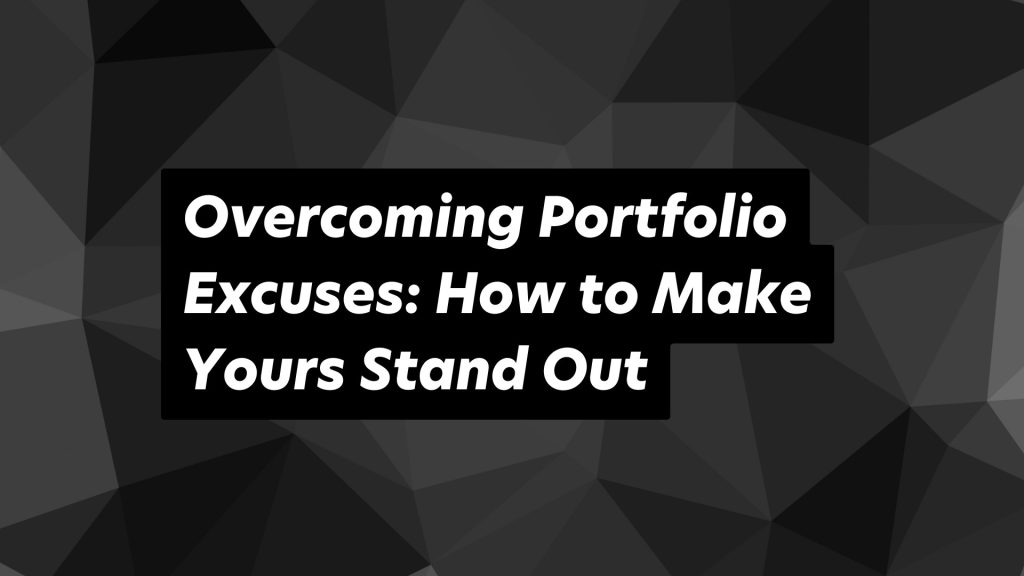At Architecture Social, we’ve reviewed thousands of portfolios and spoken to hundreds of hiring managers across the UK architecture scene. One thing is clear: your portfolio is your ticket to landing interviews. Yet, we often hear the same excuses from talented architects about why their portfolios aren’t quite ready. Sound familiar? Let’s tackle these common hurdles and turn them into opportunities to shine.
Employers typically spend just 30 seconds glancing at your portfolio before deciding whether to keep you in the running. That’s why it’s critical to make it polished, relevant, and reflective of your skills—right from the start. Here’s how to address the responses we hear most often and create a portfolio that gets you noticed.
“I Have More to Show at the Interview”
The reality? Your portfolio is what gets you the interview. A strong sample portfolio—focused on 5-10 of your best projects—grabs attention and proves your worth in those crucial 30 seconds. Save the extras for the conversation, but lead with quality to secure that invite.
“It’s All I Have”
If your project pool feels thin, don’t panic. Dig deeper—look for sketches, personal work, or visuals from past employers’ public materials (like their website or social media) that you can use ethically. Even a small selection can shine if presented well. Need more? Start a side project or refine old university work to bolster your skills.
“I Don’t Have Time”
We get it—life’s busy. But investing time in your portfolio now sets you up for a stronger career tomorrow. Start small: build a skeleton portfolio with your current projects and update it as you go. A few hours today can save stress and open doors later.
“My Projects Are Confidential”
Confidentiality is common in architecture, but it doesn’t have to stop you. Use these strategies:
- Public Images: If your firm’s website or brochure features the project, include those visuals (with a note if they’re not your own work).
- General Descriptions: Focus on your role and skills (e.g., “Led design for a mixed-use development in London”) without sensitive details.
- Redact Details: Blur out proprietary info while showcasing your contributions.
Add a short confidentiality statement (e.g., “Details redacted to respect client privacy”) to show professionalism.
“I Don’t Like the Projects I’ve Worked On”
Not every project sparks joy—and that’s okay. Highlight transferable skills instead. Present the work creatively: focus on your problem-solving, technical drawings, or teamwork rather than the project’s aesthetics. Pair it with a CV or cover letter note like, “I’m eager to apply my skills to projects that align with my passion for [sustainable design/innovative spaces].”
“I Don’t Want to Leave Anything Out—They Can Pick What They Like”
Here’s the truth: no one’s sifting through a 50-page portfolio in 30 seconds. Curate ruthlessly—choose 5-10 projects that showcase your current skills, not everything from the last decade. If you want to hint at more, add a project index at the end with brief titles and roles, but keep the focus tight.
“Can I Send a 50MB File?”
Big files frustrate recruiters and clog inboxes. Aim for a PDF between 5-15MB. Compress images to 150-200 pixels (check quality after) and limit to 20 pages. It’s enough to impress without overwhelming.
Why It’s Worth the Effort
Your portfolio isn’t just a showcase—it reflects your attitude, attention to detail, and professionalism. A direct employer might dismiss you in 30 seconds if it’s sloppy or irrelevant. At Architecture Social, we take the time to understand your skills and match you with opportunities—but a strong portfolio still gives you the edge.
Think of it as a living document. Even if you’re not job hunting, start now:
- Build a basic version with your best work.
- Add to it after every project.
- Reflect on your growth and goals.
This habit keeps you ready for opportunities and helps you spot areas to upskill—whether with your current firm or a new one.
Quick Tips to Get Started
- Select Smart: Pick 5-10 projects that align with your career goals.
- Keep It Visual: Use high-quality images and a couple of key drawings (e.g., GA plans or sketches).
- Add Context: Write short, sharp text about your role and the project’s scope.
- Stay Clean: Use consistent layouts, legible fonts, and plenty of white space.
- End Strong: Start with your best project, finish with another winner.
Your Next Step with Architecture Social
A great portfolio isn’t just about landing a job—it’s about building your future. We’re here to help you refine it, connect with top UK firms, and grow your career. Ready to make an impression? Submit your CV or explore job listings today. Let’s get you noticed!







Add a comment